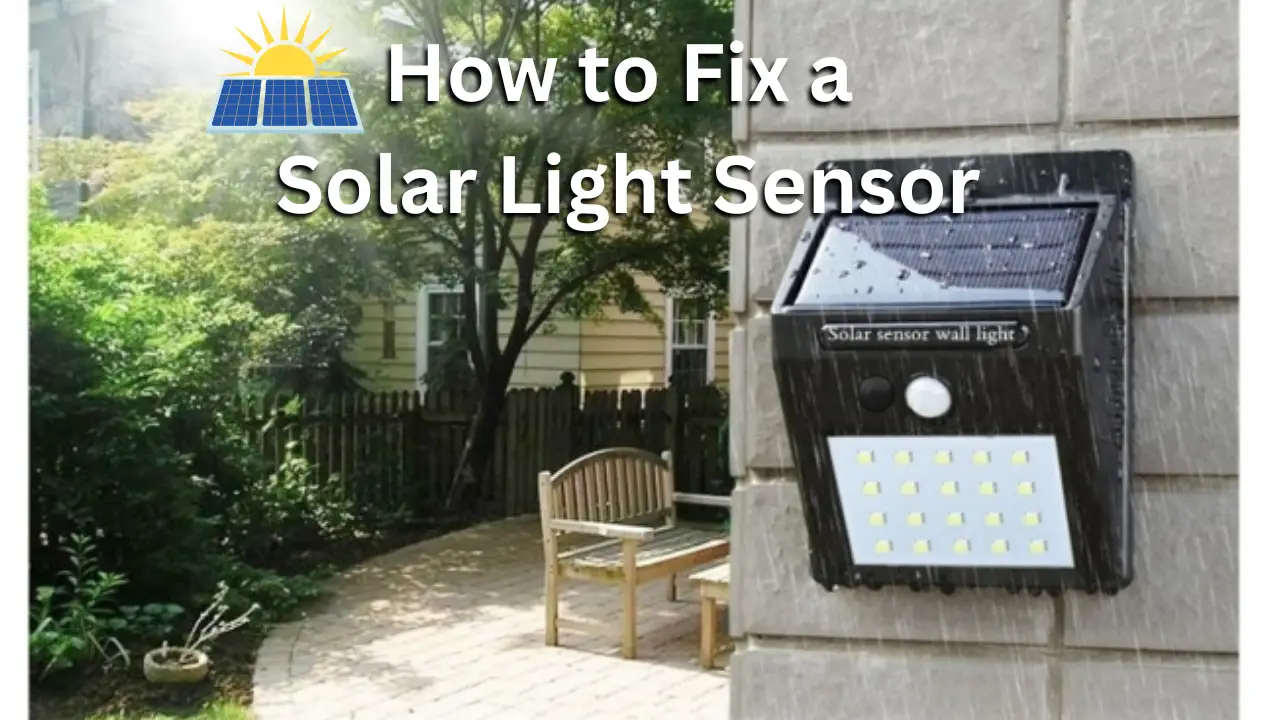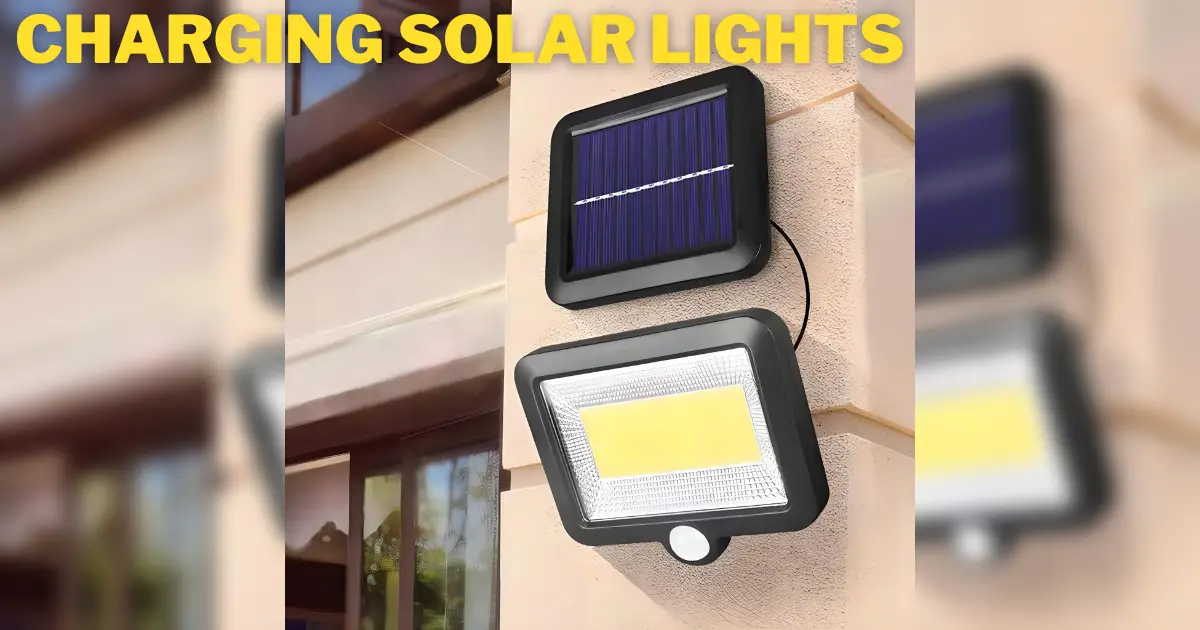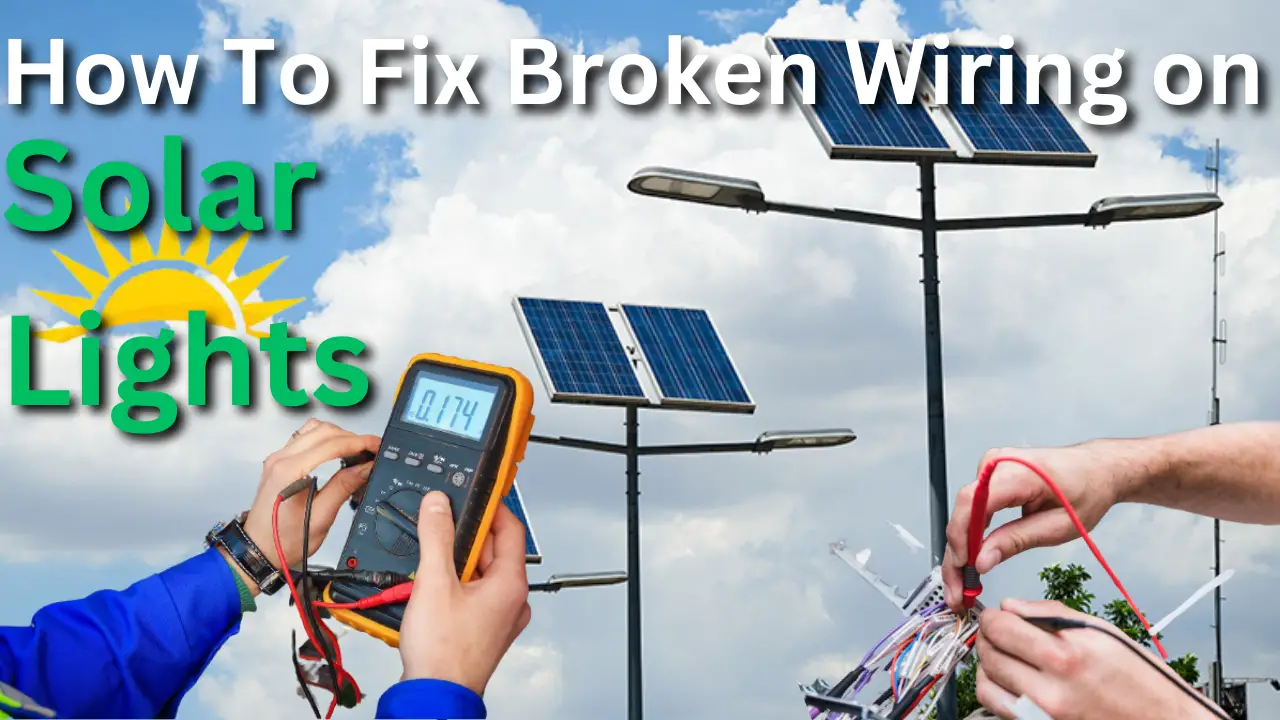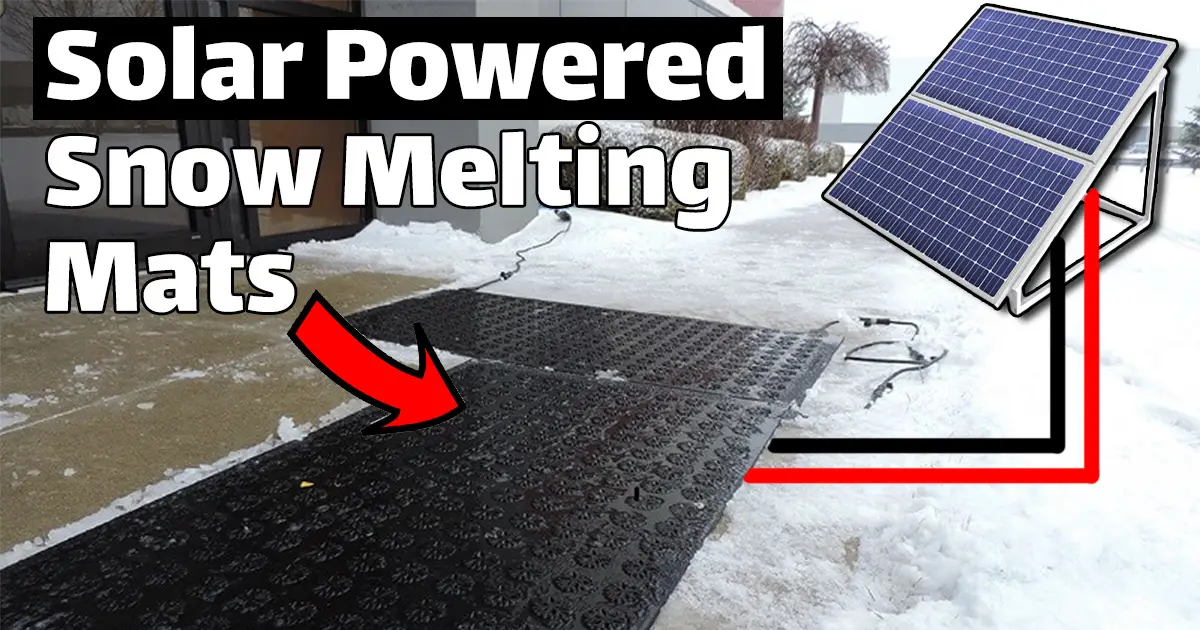Solar lights have become increasingly popular as a means of outdoor lighting. They are a great way to light up your garden, walkway, or patio without the need for electricity. However, like all electrical devices, they can sometimes encounter problems, and one of the most common problems that people face with solar lights is a malfunctioning sensor.
The sensor is the component of solar light that detects changes in the ambient light levels and triggers the light to turn on or off accordingly. If the sensor is not working correctly, the light may not turn on at all or turn on and off erratically. This can be frustrating, but the good news is that you can usually take straightforward steps to fix the problem.
In this article, we’ll take a look at some of the most common issues that can cause a solar light sensor to malfunction, as well as some tips on how to troubleshoot and fix the problem.
Main Components of Solar Light Sensor
It comprises several essential parts that work together to ensure that the solar lights function efficiently. Here are the main components of a solar light sensor:
- Photocell: Detects the amount of light in the environment and triggers the sensor to turn the light on or off.
- Control circuit: Regulates the operation of the solar light sensor by processing information from the photocell and sending signals to turn the light on or off.
- Battery: Stores the energy collected by the solar panel during the day and provides power to the light at night.
- Solar panel: Converts sunlight into electrical energy, which is stored in the battery for later use.
- LED light: The source of light in solar lights is energy-efficient and has a long lifespan.
- Sensor: It detects the presence or absence of light and sends signals to the control circuit to turn the light on or off accordingly.
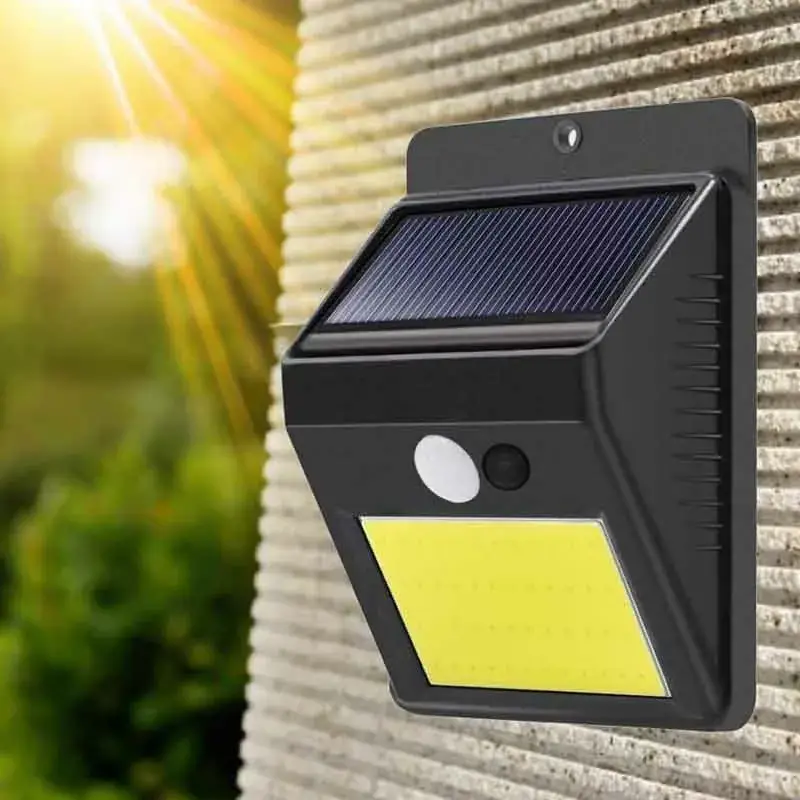
The sensor in Solar Light
There are many kinds of sensors, and they may measure anything from temperature and pressure to movement. But there are just three different kinds of sensors available in solar lights:
- Light sensor (photocell): Turns lights on at night. Thus, when this sensor detects darkness, your solar light automatically turns on at night.
- Lux Sensor: This determines how dark it must be outside to activate the light. It detects light intensity.
- Passive Infrared: This one detects heat and is used in solar-powered lights that turn on when they detect motion. When this sensor detects our body heat, it will turn on the light.
How to Diagnose Problems with Solar Lights?
Diagnosing and fixing these problems can be tricky, but with a little knowledge and some troubleshooting steps, you can get your solar lights working again in no time. Here are some visual clues to help you diagnose problems with solar lights:
- The light is turning on during the day: This happens when the sensor isn’t working properly. The light runs out of battery after an hour into the evening.
- The solar light is not receiving enough sunlight: This mostly happens after a change in the season. Check the location of the light and move it to a sunnier spot if necessary.
- The solar light is not turning on at night: There can be a problem with the LED, sensor, or battery. Check the battery for damage or corrosion and clean the solar panel to ensure it’s not covered in debris.
- The solar light is flickering: There could be a problem with the wires or the LED. Check the wiring inside the light for any loose or damaged connections.
By following these visual clues and troubleshooting steps, you can easily diagnose and fix problems with solar lights, ensuring that they continue to provide efficient and reliable lighting for your outdoor space.

How to Fix Solar Light Sensor
If your solar light sensor is not working, your lights may not turn on at night or may not emit enough light. Let us discuss how to fix a solar light sensor and identify the common issues that can cause it to malfunction. We will outline the steps you can take to troubleshoot your solar light sensor and get your solar lights back to working condition.
Your Solar Light’s Battery has a Pull Tab
The first thing to check when you encounter problems with your solar light is the battery. Many solar lights come with a pull tab that prevents the battery from discharging during shipping and storage. If you have not yet removed this pull tab, your solar light will not function. Before you start troubleshooting any other issues, check to see if your solar light has a pull tab on its battery and remove it.
Check Your Microprocessor
The microprocessor is your solar light’s brain, and it controls all of its functions. If your solar light is not working correctly, the microprocessor may have an issue. You can try resetting the microprocessor to check if this is the case. You can do this by turning off the solar light and then turning it back on again after a few minutes. If this does not work, you may need to replace the microprocessor or seek professional help.
Your Solar Lights Aren’t Getting Enough Direct Sunlight
One of the most common reasons for solar lights not working is the lack of direct sunlight. Solar lights need at least 6-8 hours of direct sunlight to recharge their batteries fully. If your solar lights are not getting enough direct sunlight, they will not be able to charge their batteries and will not work at night.
To fix this issue, make sure your solar lights are placed in an area where they can get direct sunlight for at least 6-8 hours daily. Trim back any nearby trees or bushes that may be blocking the sunlight. Additionally, ensure the solar panel is facing the right direction for maximum sunlight.

Check Your Solar Panel Cables
Another reason for solar lights not working is loose or disconnected solar panel cables. The solar panel converts the sun’s energy into electricity that charges the battery. If the solar panel cables are loose or disconnected, your solar lights will not get enough power to work properly.
To fix this issue, check the solar panel cables and ensure they are tightly connected to the solar panel and the battery. If there is any cable damage, you may need to replace them.
Nearby Light Sources at Night
Solar lights use a light sensor to detect when it is dark outside and turn on the lights. If there are nearby light sources, such as streetlights or porch lights, they may interfere with the solar light sensor and prevent it from turning on the lights.
To fix this issue, try moving your solar lights to an area with no nearby light sources that could interfere with the light sensor. Alternatively, you can try adjusting the position of the solar light sensor to minimize interference from nearby light sources.
The Passive Infra-Red (PIR) Dials (Motion Detector)
Some solar lights have a motion detector that uses passive infrared (PIR) technology to detect movement and turn on the lights. If your solar lights are not turning on when motion is detected, there may be an issue with the PIR dials.
To fix this issue, check the PIR dials and ensure they are set to the right sensitivity level. The motion detector may not detect movement properly if the sensitivity level is too low. If the sensitivity level is too high, the motion detector may be triggered by objects or animals not close enough to the solar light. Adjust the PIR dials to the appropriate sensitivity level to fix this issue.

Faulty Light Sensor
If your solar light sensor is faulty, it may be unable to detect when it is dark outside and turn on the lights. To fix this issue, you may need to replace the light sensor. Before doing so, however, make sure that the other troubleshooting steps have been attempted.
Check the Batteries
If your solar light batteries are not holding a charge, your solar lights will not work properly. To fix this issue, you may need to replace the batteries. Before doing so, ensure the other troubleshooting steps have been attempted. Additionally, ensure you use the correct battery type for your solar lights. Check the manufacturer’s specifications to ensure you use the correct battery type and size.
Water and Residue Buildup
Over time, water and residue can build up on the solar panel and the light sensor, preventing them from functioning properly. To fix this issue, regularly clean the solar panel and the light sensor. Use a soft cloth and a gentle cleaning solution to wipe away any dirt, debris, or residue that may be blocking the solar panel or light sensor.
Your LEDs are Faulty
If your solar lights are turning on but not emitting enough light, there may be an issue with the LEDs. Over time, LEDs can become damaged or worn out, which can cause them to emit less light. To fix this issue, you may need to replace the LEDs. Before doing so, ensure the other troubleshooting steps have been attempted.
Clean the Sensors
Dirt and debris can accumulate on the sensors of your solar light, which can interfere with their proper functioning. You can clean the sensors using a soft cloth and a gentle cleaning solution to fix this issue. Ensure you do not use harsh chemicals or abrasive materials that could damage the sensors.

Adjust the Angle of The Sensor
If your solar light sensor is not pointing in the right direction, it may be unable to detect when it is dark outside and turn on the lights. To fix this issue, adjust the angle of the sensor so that it is pointing in the right direction. Use a screwdriver or other tool to change the sensor as needed.
How Are Solar Lights Cleaned?
The steps for cleaning your solar lights are as follows:
- Depending on the solar light model, there will be screws on the case’s top or bottom. All of these screws need to be undone. Remember which screw goes where.
- The case houses the entire electronic setup, and it’s likely that the batteries also have housing for themselves. You must remove this casing’s screws.
- After removing the top glass casing, use a moist cloth or cleaning solution. If there is a lot of dirt inside, you can wash it in a sink.
- After removing the battery from its case, clean it and the battery. Eliminate any debris or insects from the contacts since they could cause the battery to get disconnected. If your lamp is older, you can lightly sandpaper the contacts to get rid of the rust and tenacious chemical buildup.
Tips for Keeping Your Solar Light Sensor Working Properly
The following are some pointers that will help you keep your solar light sensor in good working order:
- Be sure that the solar light is installed in a location that will allow it to receive direct sunlight during the day. Since the solar panel must be exposed to sunlight to recharge the battery, positioning the panel in a shaded area may prevent the battery from receiving enough electricity to allow the light to function properly at night.
- Maintain a clean condition on the light sensor. The light sensor is susceptible to accumulating dust and debris, which can prevent it from being activated. Use a gentle cloth to remove any dust or grime that may have accumulated.
- Be sure to check on the batteries regularly. Rechargeable batteries are what power solar lights, but with time, such batteries will lose their capacity to keep a charge for very long. A charge is required for the solar light sensor for it to function correctly.

FAQs
How long do solar lights last?
The lifespan of solar lights can vary depending on the quality of the product and how well they are maintained. On average, solar light can last anywhere from 2-5 years.
Can solar lights work in the winter?
Yes, solar lights can work in the winter if they are exposed to enough sunlight during the day to charge the batteries. However, the amount of sunlight available in the winter may be less than in the summer, which can affect the amount of light emitted by the solar lights.
Do I need to turn off my solar lights during the day?
You do not need to turn off your solar lights during the day. It is important to leave them on so that the sun can charge the batteries.
Can I use regular batteries in my solar lights?
No, regular batteries should not be used in solar lights. Solar lights require special rechargeable batteries designed to be charged by the sun. Using regular batteries can damage your solar light and potentially cause a fire.
Conclusion
So, there you have it! These are the steps you can take to fix your solar light sensor and get your outdoor space shining brightly once again. Whether it’s cleaning the sensor, checking the batteries, or adjusting the angle of the sensor, there are many things you can do to ensure that your solar lights are working properly.
Remember to perform regular maintenance on your solar lights to keep them in tip-top shape, and don’t hesitate to seek professional help if you need it. With these tips and tricks, you can enjoy your solar light for years to come!

